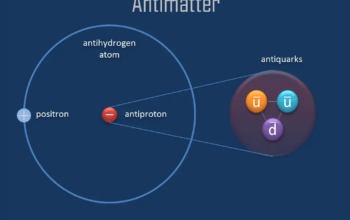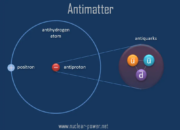As Europe embarks on a journey into the future of scientific exploration, the construction and enhancement of research facilities loom large on the horizon. These laboratories aspire to become bastions of knowledge, serving as crucibles for innovation and centers of academic excellence. In this epoch of unprecedented technological advancement, the next century’s research facilities must embody the spirit of inquiry, resilience, and collaboration. This treatise elucidates the transformative potential of Europe’s future research environments and their intricate role in elevating the scientific discourse.
Envision, if you will, a laboratory that resembles a vibrant ecosystem, where ideas blossom like flora and innovation flows as freely as water through a creek. Such facilities will not merely be enclosures of instruments and data but sanctuaries where interdisciplinary collaboration thrives. By fostering an environment that mimics natural ecosystems, these labs will imbue the very essence of diversity into scientific inquiry, ensuring that varied perspectives contribute to problem-solving and creative thinking.
Central to the evolution of these research facilities is the prospect of digital integration. The confluence of artificial intelligence (AI), machine learning, and big data analytics is poised to redefine the way researchers approach problems. Picture a laboratory where researchers manipulate vast amounts of data akin to an artist wielding a palette of colors. Unraveling the complexities of climate change, medical research, or materials science will hinge upon the capacity to synthesize information from disparate fields. This intellectual interweaving will not only enhance scientific understanding but will also catalyze breakthroughs that remain elusive in siloed environments.
Moreover, the architecture of these future laboratories will reflect their purpose. The design will transcend mere functionality; it will express a philosophical vision of science as a communal enterprise. Facilities will be constructed with open spaces and flexible layouts conducive to serendipitous encounters—those chance meetings that often spark revolutionary ideas. The incorporation of green technologies, such as solar panels and bio-inspired designs, will further align these facilities with sustainability imperatives, demonstrating an acute awareness of planetary health.
Collaboration between academic institutions and industry is another crucial facet of the future lab ecosystem. The traditional boundaries separating these two spheres will blur, creating symbiotic relationships that advance applied research. In this milieu, corporate entities will not only provide funding but also engage with researchers in a meaningful exchange of expertise and resources. Such partnerships will accelerate the translation of laboratory findings into real-world applications, addressing pressing societal challenges with alacrity and relevance.
Future research facilities will also emphasize inclusivity and accessibility, ensuring that the pursuit of knowledge transcends geographical, socioeconomic, and cultural barriers. Virtual labs and remote collaboration tools will become commonplace, enabling global teams to engage in real-time experimentation and data sharing. Through innovative digital platforms, researchers from disparate corners of the globe will unite in a shared mission—expanding the horizons of knowledge while fostering mutual understanding and respect.
Central to the ethos of these laboratories will be a commitment to ethical research practices. As science intersects with societal issues, the ethical dimensions of research will gain prominence. Future facilities will be instrumental in establishing a robust framework for the responsible conduct of research. This will involve not only compliance with regulatory measures but also an active engagement with the moral implications of scientific endeavors. Call it a “moral compass” for science, guiding researchers in navigating the intricate and often murky waters surrounding topics such as genetic engineering, artificial intelligence, and environmental sustainability.
As we consider the potential of Europe’s next-century research facilities, one cannot overlook the role of education within this framework. Laboratories will function as pedagogical environments, fostering a culture of curiosity and inquiry among students and aspiring scientists. The integration of educational workshops, seminars, and outreach initiatives will engage the broader community, demystifying scientific research and promoting a culture of appreciation for science. As future scholars immerse themselves in this ecosystem, they will emerge not just as experts in their fields but as ambassadors of knowledge, ready to propagate the ethos of inquiry throughout society.
In conclusion, Europe’s future research facilities represent more than mere infrastructures; they symbolize the aspirations of a continent committed to exploring the frontiers of knowledge. These laboratories will emerge as vibrant ecosystems, fostering collaboration, innovation, and ethical inquiry. As Europe navigates the complexities of the 21st century, the research labs of the next century will undoubtedly serve as lodestars, guiding scholars and practitioners alike toward a future steeped in discovery, creativity, and collective advancement. In this realm of endless possibilities, the seeds of progress will be sown, paving the way for a transformative epoch in the scientific community.








